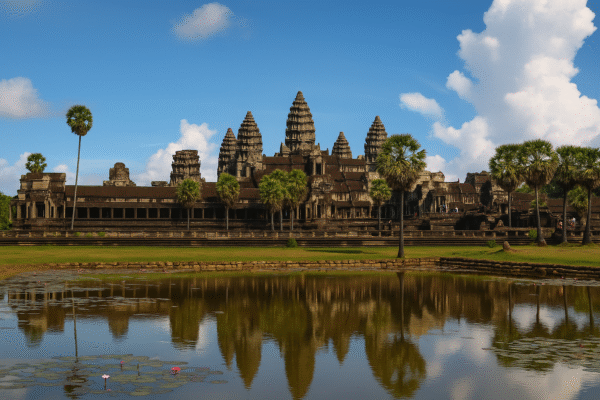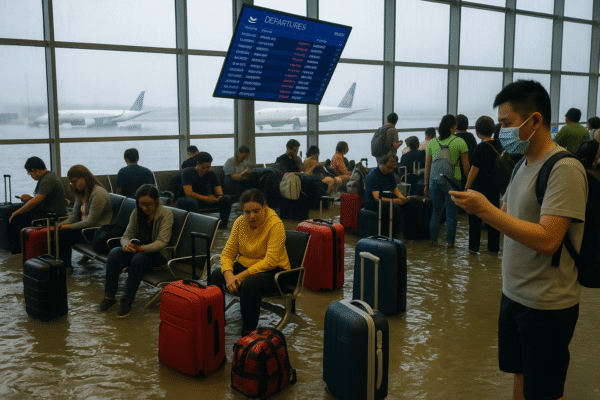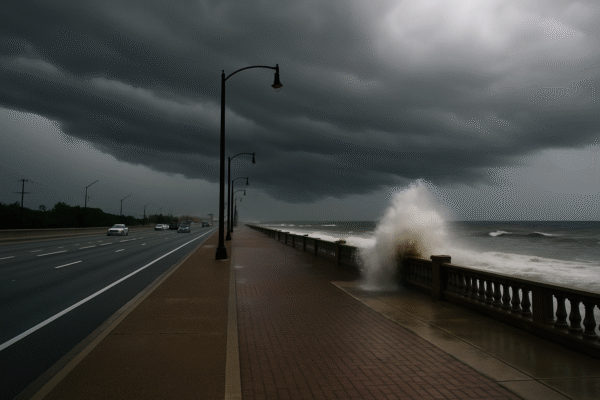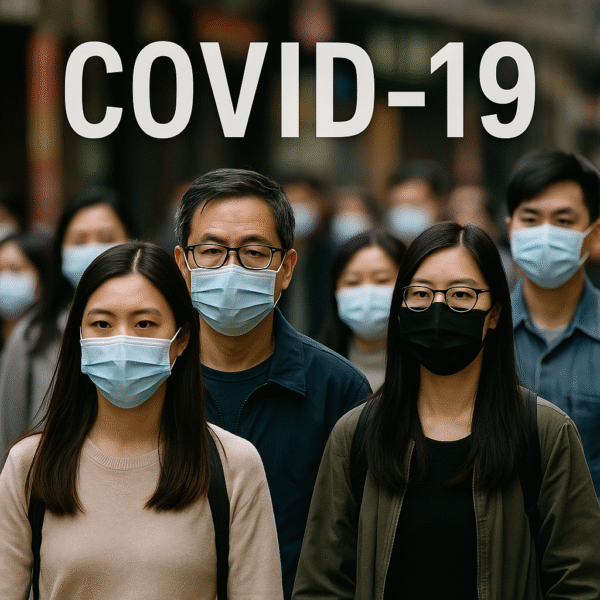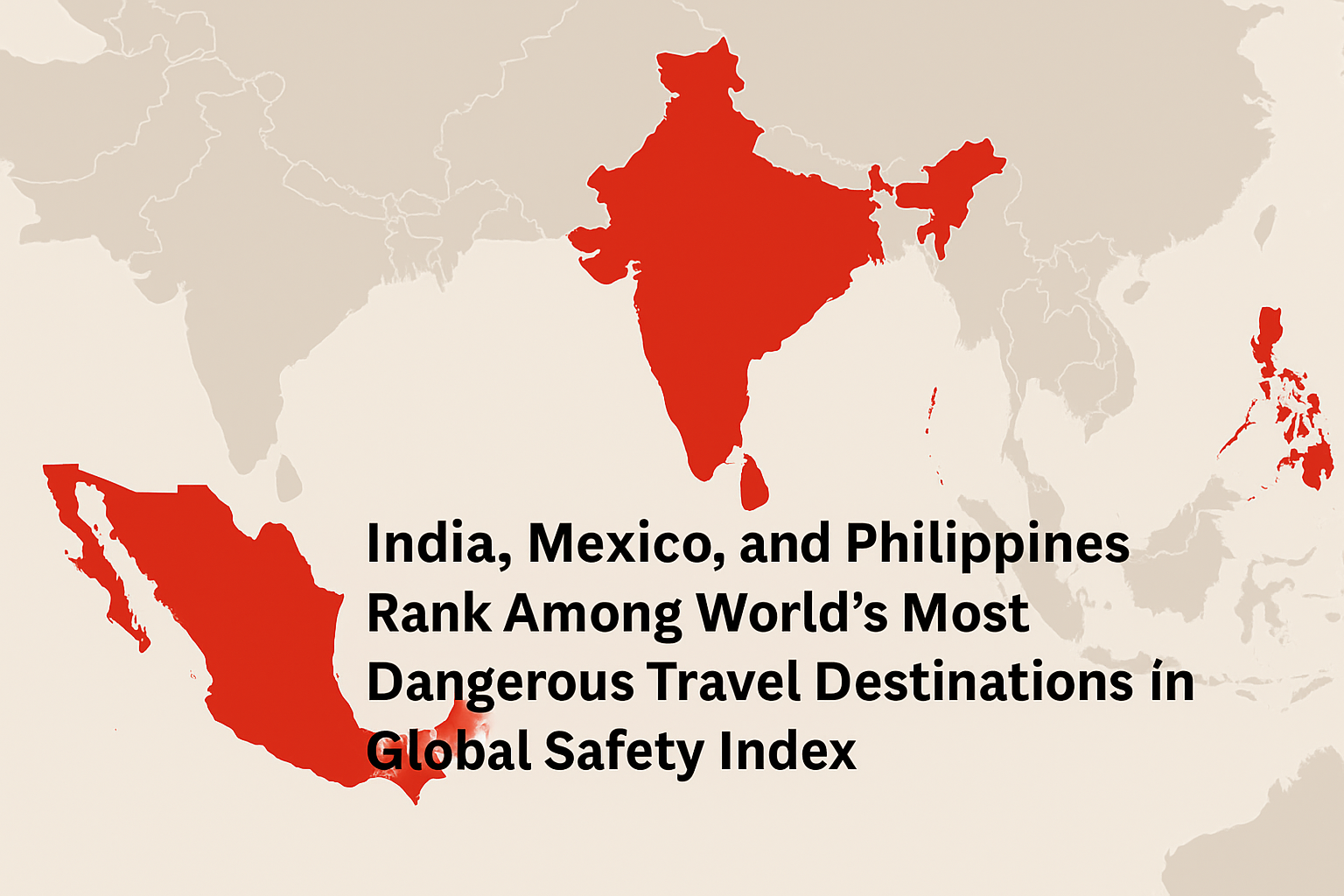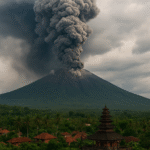India, alongside the Philippines, Mexico, and Colombia, has been identified as one of the world’s most dangerous countries for international tourists, according to a newly released HelloSafe Global Travel Safety Index. The report, compiled by UK-based financial comparison platform HelloSafe, evaluates global travel safety through 35 risk indicators, raising alarms for travelers planning visits to these culturally significant but high-risk nations.
India secured the fourth position on the list with a danger score of 77.86 out of 100, following the Philippines (82.31), Colombia (79.21), and Mexico (78.42). The index aims to provide tourists with an evidence-based understanding of travel hazards, including violence, natural disasters, armed conflict, weak healthcare infrastructure, and militarization.
Breakdown of the Travel Danger Index
HelloSafe’s methodology segments risk into five primary categories:
- Natural Disaster Exposure
- Societal Violence
- Internal and External Armed Conflicts
- Healthcare System Strength
- Level of Militarization
Countries are rated on a danger scale from 0 (safest) to 100 (most dangerous). India’s high rating reflects a blend of infrastructural limitations, sociopolitical instability, and violent incidents, particularly those affecting foreign nationals.
Violence Against Tourists a Growing Concern in India
One of the key concerns flagged in the report is the continuing trend of gender-based violence, which impacts both local residents and tourists. In March 2025, an Israeli tourist and an Indian woman were reportedly gang-raped near Hampi, a UNESCO World Heritage site in Karnataka. A local man was also killed during the attack. The incident sent shockwaves through the travel community and raised fresh questions about the safety of tourists in remote or poorly patrolled heritage zones.
This is not an isolated case. While the Indian government has launched initiatives to bolster tourism safety, including women-only transport options and tourism police units, enforcement remains inconsistent.
Infrastructure Disparities Across India
While India’s metropolitan hubs—such as Delhi, Mumbai, and Bengaluru—boast state-of-the-art healthcare facilities and enhanced emergency response networks, such amenities are often absent in rural or remote regions, where many of India’s top tourist attractions lie.
The lack of universal access to emergency medical care, combined with language barriers and limited tourist orientation infrastructure, adds to traveler vulnerability. In crisis situations, the delay in accessing assistance can significantly affect outcomes.
Natural Hazards Add a Layer of Risk
India’s vast and varied geography also contributes to its ranking. The country is highly susceptible to natural disasters, including:
- Cyclones along the east coast (Odisha, Andhra Pradesh, West Bengal)
- Flooding during monsoon seasons (June–September)
- Earthquakes in the Himalayan belt (Uttarakhand, Himachal Pradesh)
- Heatwaves, particularly in central and northern India
The lack of awareness about disaster-prone regions, especially for first-time or solo travelers, increases potential hazards during seasonal travel.
Comparative Risk: Where India Stands Globally
Although India’s danger score of 77.86 is alarming, several countries scored even higher:
- Philippines tops the list, plagued by frequent typhoons, insurgency-related violence, and poor infrastructure in remote provinces.
- Colombia still struggles with narco-violence and gang-related crime despite a strong rebound in tourism.
- Mexico, particularly cities like Tijuana, Acapulco, and parts of Cancun, is consistently under U.S. State Department warnings due to cartel violence.
India’s issues differ but are no less concerning, especially given the wide variance in safety across states and regions.
Balancing Reality and Perception
Despite these challenges, India remains one of the most visited countries in Asia, drawing over 15 million international tourists annually according to the Ministry of Tourism. Attractions like the Taj Mahal, Kerala backwaters, Varanasi ghats, and Goa beaches continue to captivate global travelers.
Many tourists still report overwhelmingly positive experiences, especially when adhering to local safety advice and traveling with guided tours or reputable agencies.
To mitigate risks, travelers are advised to:
- Monitor official travel advisories from their home governments
- Avoid isolated areas after dark
- Use registered transportation services
- Keep emergency contact information on hand
- Purchase comprehensive travel insurance
A Wake-Up Call for Policy and Safety Reform
The HelloSafe report should be viewed not just as a warning to tourists but also as a call to action for governments and tourism authorities. India, in particular, stands to gain immensely from its growing global appeal—but this must be balanced with robust investments in safety infrastructure, tourist education, and community engagement.
Tourism stakeholders have already begun responding. Some state governments have introduced women-only accommodations, public CCTV coverage, and dedicated tourism police forces in high-traffic zones. However, experts stress that systemic reforms are needed to ensure long-term change.
Final Thoughts
India’s inclusion in the top tier of the HelloSafe Global Danger Index signals the urgent need for comprehensive safety policies, improved healthcare infrastructure, and a rethinking of how tourism is governed—especially in lesser-developed areas. While the nation remains an essential destination for global travelers, ensuring safety, equity, and access will be key to its continued success in the post-pandemic tourism era.
For those planning to visit in 2025, caution, research, and preparedness are essential tools to enjoy the richness of India’s cultural and natural wonders without unnecessary risk.
For more travel news like this, keep reading Global Travel Wire




